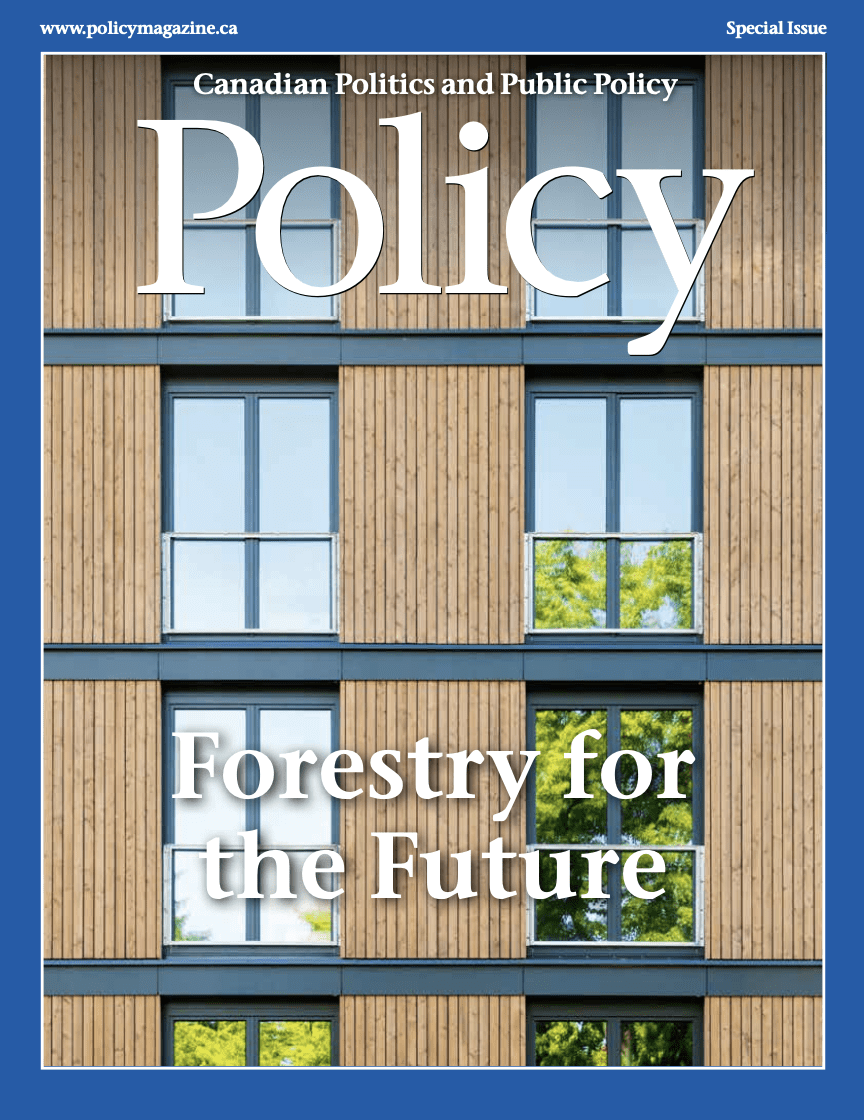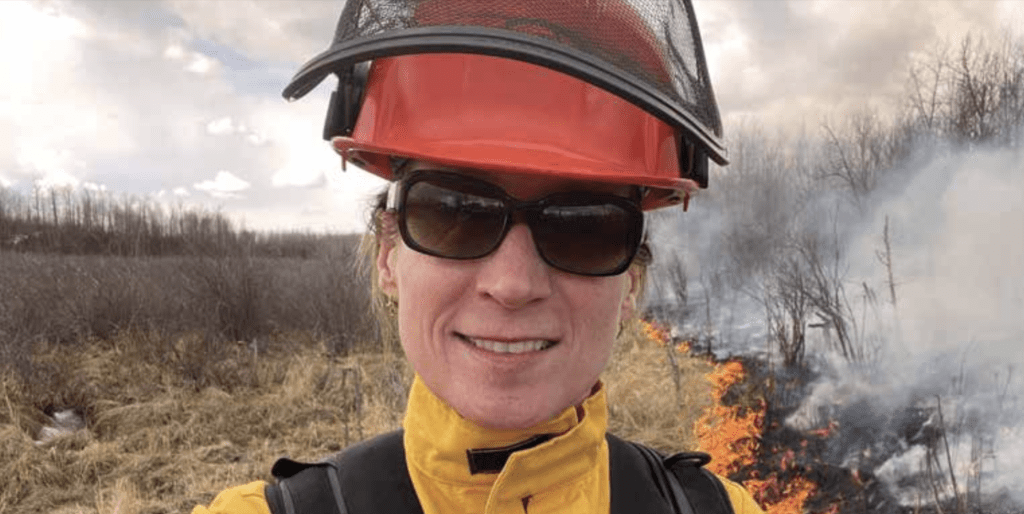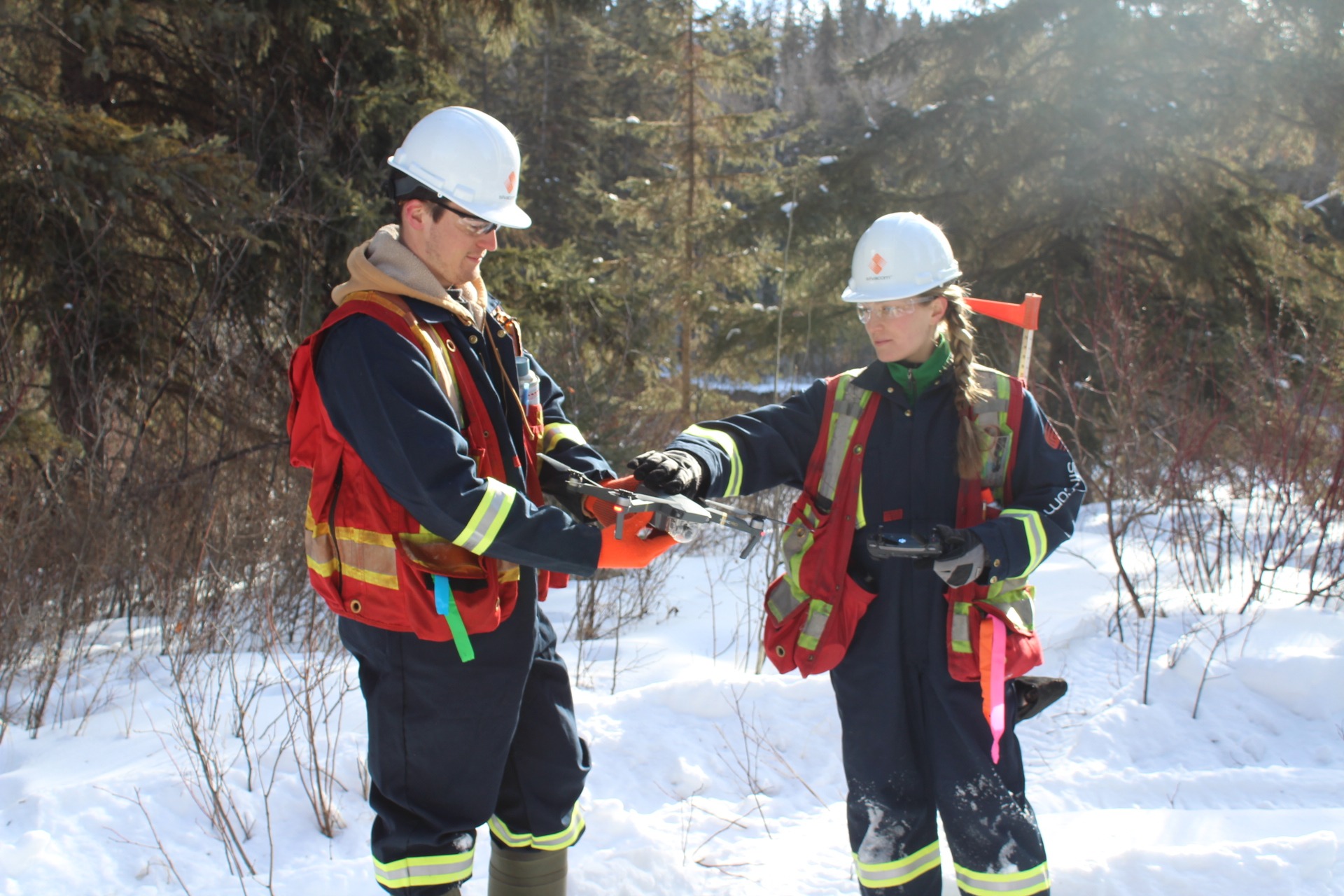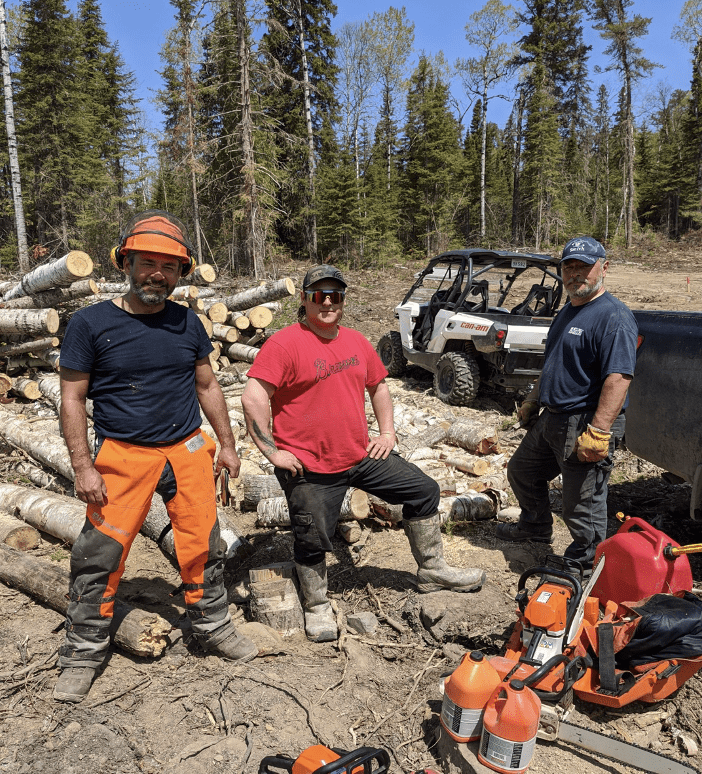Forestry for the Future: The FPAC-Policy Special Issue

Welcome to the Forest Products Association of Canada (FPAC) Special Issue of Policy magazine, offering a selection of fresh intelligence and insight from Canada’s forest sector. In a package that covers the vast stakes and implications of a healthy Canadian forest sector — from its crucial contribution to our economy to its role in Indigenous development and reconciliation to the increasing urgency of wildfire management — we’ve gathered a stellar group of researchers, innovators and policy experts. The PDF version of the magazine is available here. Enjoy the issue.
In this Issue
We begin with an opening note from FPAC Board Chair David Graham and FPAC CEO Derek Nighbor. “Today, the future of the forest sector and its more than 200,000 workers depends on the success of our ongoing commitment to innovation and sustainable development in every area of our business,” write Graham and Nighbor in Forestry for the Future. “As was tragically evident from the recent personal, physical and economic devastation in Jasper, Alberta, we must better work with our forests and forested communities to mitigate the risk of more catastrophic wildfire patterns.”

We need to rethink fire risk and forest management. Canada’s wildfires burned an enormous 17 million hectares in 2023, surpassing all previous records. “Unfortunately, efforts to guide wildfire science nationally,” writes Dr. Jennifer Beverly in Rethinking Fire Risk and Forest Management, “tend to define risk within a traditional likelihood-times-impact probabilistic framework that is championed by many in government.”
With those wildfires increasingly threatening our boreal ecosystems, traditional reforestation methods alone cannot keep up. Flash Forest’s drone-based reforestation system is a powerful tool in supplementing conventional planting.”The mission of Flash Forest,” write Bryce Jones and Angelique Ahlström in Reforestation for a Changing World, “is set to accelerate forest restoration at scale using new technologies, with a target of one billion trees by the end of the decade.”
Canada’s forestry history is intertwined with Indigenous knowledge and practices, including prescribed burning. As Indigenous Resource Network Executive Director John Desjarlais writes in Driving Canada’s Economy Forward with Indigenous-Led Forestry, government support can help empower Indigenous-led initiatives to increase economic opportunities and drive sustainable solutions.
Can Canada be a leader in global carbon reduction? In Going Negative: How Canada Can Help Decarbonize the World, TorchLight Bioresources Managing Director Dr. Jamie Stephen writes that by making use of our natural resources, including through BioEnergy with Carbon Capture and Storage (BECCS), Canada can help meet climate goals while growing our economy.

While all aspects of forestry are being transformed by technological innovation, Silvacom’s Tom Grabowski and Alexander Bilyk caution that tech is no substitute for “boots on the ground”. “Technology should empower forestry professionals to make faster decisions and improve field efficiency,” they write in Forestry in the Digital Age: Why Experience Still Matters, “but never be a substitute for solving problems by engaging professional foresters with years of knowledge and experience.”
Since its inception, the Forest Enhancement Society of BC (FESBC) has driven change across the province’s forest sector, from boosting Indigenous leadership and reducing wildfire risks to enhancing wildlife habitats, accelerating ecological recovery, and fostering community stability with sustainable jobs. In British Columbia’s Transition to Modern, Climate-Smart Forestry, FESBC Executive Director Steve Kozuki explains how targeted investments in collaboration and innovation can achieve environmental, social, and economic benefits.
If the Eiffel Tower were being built today, it would be made of wood. That was the message in the plethora of mass-timber architecture on display at the 2024 Paris Olympics, an unprecedented showcase for a revolution in sustainable and climate-smart construction and housing solutions. In Building a Sustainable Future: Scaling Canada’s Mass Timber Sector, Dr. Bentley Allan and Dr. Derek Eaton of the Transition Accelerator provide a fascinating primer, as well as a path forward.
As global challenges such as resource scarcity and climate change intensify, the need for sustainable solutions has never been more critical. As 3M Canada Country Governance Leader Dr. Marie-Claude Brandys writes in Fostering Sustainability Within a Circular Economy, 3M is committed to advancing sustainability through innovative solutions such as Scotch™ Cushion Lock™ Protective Wrap as an alternative to traditional bubble wrap.

Indigenous Peoples across Canada are demonstrating that sustainable development and economic growth can go hand in hand; leading the way with projects that respect both the land and the people. As JP Gladu writes in The Indigenous Economy: An Engine of Reconciliation, Growth and Progress, the new Federal Indigenous Loan Guarantee Program and similar provincial initiatives are empowering Indigenous nations in major developments, including in the forest sector.
Canada’s forestry practices are among the most sustainable globally, with less than 0.02% of our forests converted to other uses annually. But new regulations such as the EU’s Deforestation-Free Products Regulation (EUDR) challenge our commitment to sustainability and fire management. Forest industry consultant and blogger Alice Palmer unpacks the implications in Can We Plant Trees and Maintain Biodiversity?
In a political environment where economic and climate goals seem intractably irreconcilable, “there’s one sector in Canada that can uncompromisingly advance emissions reductions goals while thriving economically,” writes Business Council of Canada advisor Dr. Heather Exner Pirot, “the forestry industry.” Here’s Exner-Pirot with Canada’s Forest Sector: Born on Third Base, Hampered by Policy.
Despite contributing $73 billion to the economy last year and supporting over 200,000 direct jobs across the country, forestry often gets overlooked. We need a cohesive policy framework that supports forestry’s full potential, writes Rideau-Potomac Strategy Group President Eric Miller in Canada’s Industrial Policies Need a Forestry Branch.
This issue of Policy is brought to you by the Forest Products Association of Canada (FPAC) and Forestry for the Future. The PDF of this issue is available here.
Visit us at Policy Online, where you’ll find our latest Policy Specials, Columns, Dispatches, Analysis, Book Reviews and Verbatim sections, plus The Week in Policy and all our posted print issues.
